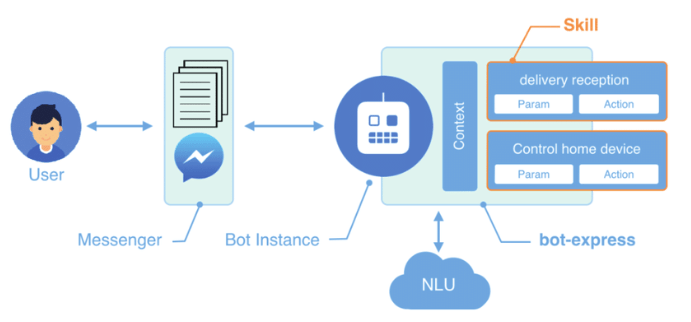What is Natural Language Understanding (NLU)?
Natural Language Understanding is a branch of artificial intelligence. It is a subfield of Natural Language Processing (NLP) and focuses on converting human language into machine-readable formats.
Computers use NLU along with machine learning to analyze data in seconds. This is especially useful when a business is attempting to analyze customer feedback as it saves the organization an enormous amount of time and effort.
NLU essentially generates non-linguistic outputs from natural language inputs.
Natural Language Understanding can be defined as:
“The comprehension by computers of the structure and meaning of human language (e.g., English, Spanish, Japanese), allowing users to interact with the computer using natural sentences”
- Gartner

What is the difference between NLP and NLU?
NLU and NLP are often mistaken for each other. But they are not the same thing. Natural Language Understanding is a part of Natural Language Processing.
NLU takes the communication from the user, interprets the meaning communicated, and classifies it into the appropriate intents. It uses multiple processes, including text categorization, content analysis, and sentiment analysis which allows it to handle and understand a variety of inputs.
It rearranges unstructured data so that the machine can understand and analyze it. In its essence, NLU helps machines interpret natural language, derive meaning and identify context from it. It also allows machines to draw insights from the natural language data.
Natural Language Processing, on the other hand, is an umbrella term. It encompasses everything that revolves around enabling computers to process human language. This includes receiving inputs, understanding them, and generating responses.
NLP is a type of artificial intelligence that focuses on empowering machines to interact using natural, human languages. It also enables machines to process huge amounts of natural language data and derive insights from that data.
NLP processes natural language in its literal sense. That would not work very well. Let’s just say that a statement contains a euphemism like, ‘James kicked the bucket.’ NLP, on its own, would take the sentence to mean that James actually kicked a physical bucket. But, with NLU involved, it would understand that the sentence was a crude way of saying that James passed away.
How does Natural Language Understanding (NLU) work?
NLU systems first analyze input text. Then they use that to understand the meaning behind the user’s request. To do that, it matches the user’s input to the training data that corresponds to a specific ‘intent’.
What is an intent in Natural Language Understanding?
The intent is essentially the meaning behind the user’s input. It refers to the action which the user intends to perform.
The NLU systems match the input text to similar text in their training data to identify the intent.
What are the use cases of Natural Language Understanding?
.jpg)
Now that you know how does Natural language understanding (NLU) work, and how it is used in various areas. Here are some of the most common natural language understanding applications.
Automated reasoning
This is a subfield of cognitive science. It gives machines a form of logic, allowing to reason and make inferences via deductive reasoning.
It can even be used to prove mathematical theorems automatically.
Answering questions and semantic parsing
NLU systems can be used to answer questions contextually, helping customers find the most relevant answers with minimum effort. This is especially useful in customer service scenarios. It also helps voice bots figure out the intent behind the user’s speech and extract important entities from that.
Translation
NLU can be used for machine translation. It can help translate text as well as speech from one language to another. In machine translation, machine learning algortihms analyze millions of pages of text to learn how to translate them into other languages. The accuracy of translation increases with the number of documents that the algorithms analyze.
Conversation routing
If you are using a live chat system, you need to be able to route customers to an agent that’s equipped to answer their questions. You can’t afford to force your customers to hop across dozens of agents before they finally reach the one that can answer their question.
Fortunately, NLU in AI can help. It can understand the context behind your users’ queries and empower your system to route them to the right agent the very first time.
It can even be used in voice-based systems, by processing the user’s voice, then converting the words into text, parsing the grammatical structure of the sentence to figure out the user’s most likely intent.
Text categorization & classification
Natural language understanding makes it possible for systems to evaluate, analyze, and classify text-based input (which can either be plain text or STT converted text) into pre-defined categories on the basis of the content of the input. The spam filters in your email inbox is an application of text categorization, as is script compliance.
Text summarization
NLU can be used for automatic summarization of extremely vast text passages and documents, breaking them down into small yet comprehensive summaries, to reduce information overload and cut down on the time that would be required to read those documents.
Sentiment analysis
Natural language understanding (NLU) assists in detecting, recognizing, and measuring the sentiment behind a statement, opinion, or context, which can be very helpful in influencing purchase decisions. It is also beneficial in understanding brand perception, helping you figure out how your customers (and the market in general) feel about your brand and your offerings. Sentiment analysis is also known as emotion mining.
Data capture
Data capture refers to the collection and recording data regarding a specific object, person, or event. If a company’s systems make use of natural language understanding, the system could understand a customers’ replies to questions and automatically enter the data.
























